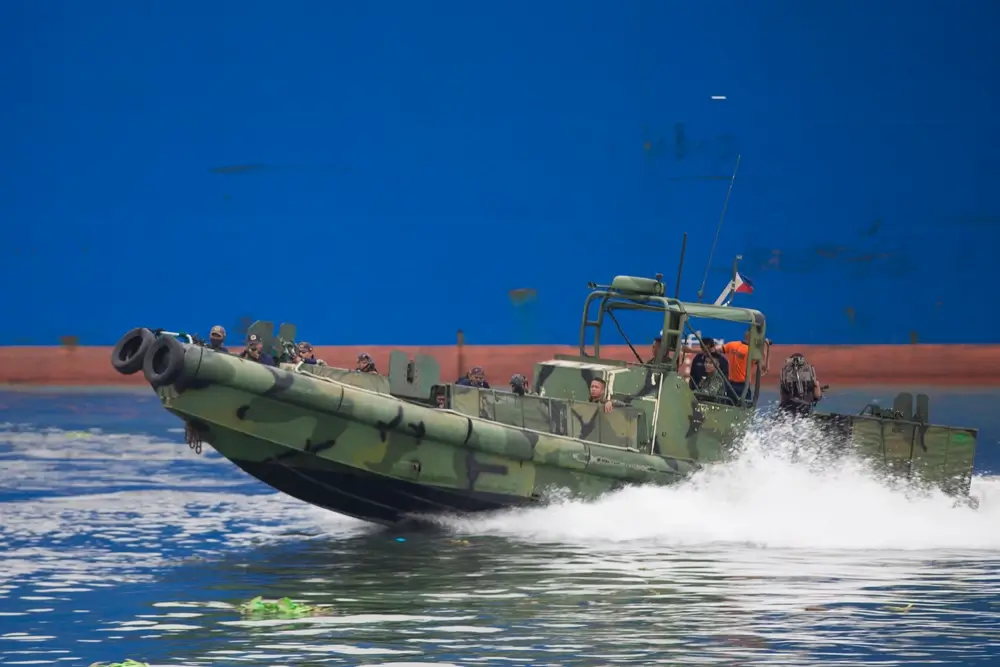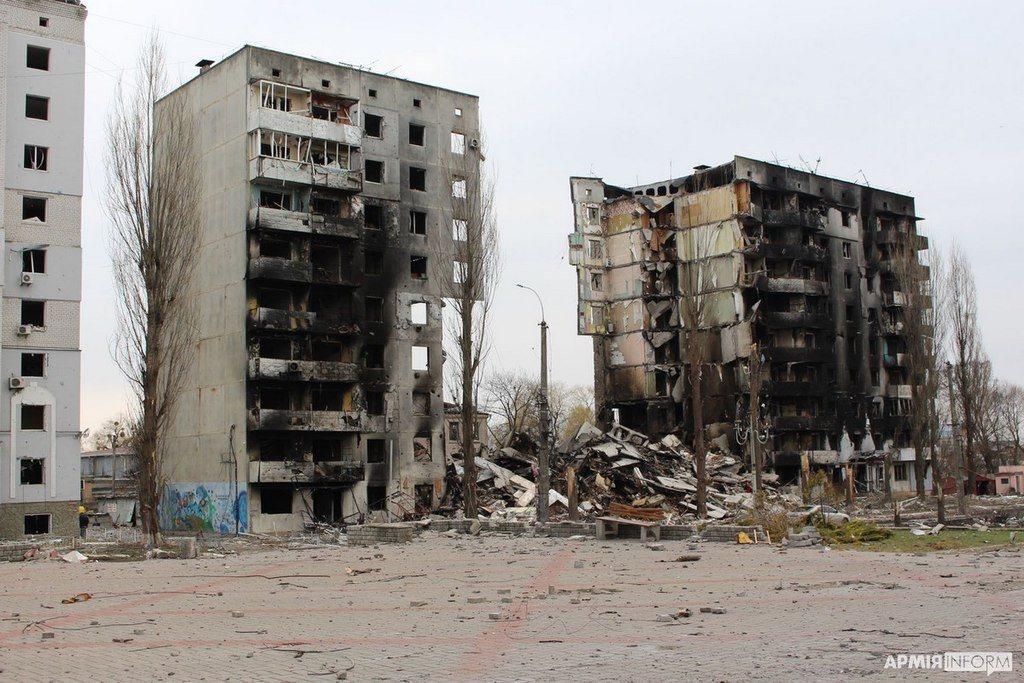Water Wars: New Fault Lines and Frictions, from the Indian Ocean to the Pacific

Published by The Lawfare Institute
in Cooperation With

After announcing a provisional agreement addressing some differences over one territorial dispute, Second Thomas Shoal, China and the Philippines found themselves in a new row in August over a separate area in the South China Sea: Sabina Shoal. The Philippines and other Southeast Asian nations that have their own territorial disputes with China have also spent the month building new defense alliances and participating in joint exercises in the region. Some of these countries are also home to Chinese-owned or controlled ports, which may be facing increasing competition in the coming years due to U.S. and Indian efforts to diminish China’s port dominance in the Indo-Pacific.
New Flashpoints for Chinese and Philippine Coast Guards
Chinese and Philippine Vessels Clash at the Sabina Shoal
On Aug. 19 at 3:24 a.m. local time, Chinese and Philippine coast guard vessels collided near the Sabina Shoal—a disputed 14-mile stretch in the South China Sea approximately 86 miles west of the Philippine island of Palawan. Both countries’ ships sustained damage. A spokesperson for the Chinese Coast Guard said that two Philippine Coast Guard ships had “illegally intruded” into the waters near the shoal, during which one ship “deliberately collided” with the Chinese ship that was “safeguarding rights and enforcing the law.” The spokesperson said that incident “seriously violated China’s territorial sovereignty.” The Chinese Coast Guard also released a video on social media platform Weibo, which shows a Chinese boat driving away a Philipinne boat in waters near the island.
The Philippines disputed China’s account; Manila’s National Task Force for the West Philippine Sea said that Beijing was at fault and conducted “unlawful and aggressive maneuvers.” Manila claimed that its coast guard vessels, the Cape Engaño and the Bagacay, were en route to resupply personnel stationed on Flat Island when the incident occurred. The Philippines’s statement also said that one of the Chinese ships ripped a 3.6-foot hole in the right side of the Cape Engaño, and 15 minutes later, another Chinese vessel rammed the Bagacay twice, leaving dents and holes. The Manila task force said that the Philippines “stands firm in its responsibility to ensure the safety and security of our maritime domain while addressing any threats to our national interests.” The U.S. Embassy in Singapore released a statement in support of the Philippines, calling China’s actions “the latest examples of the PRC using dangerous and escalatory measures to enforce its expansive and unlawful South China Sea maritime claim.”
Both countries have conducted joint patrols in the region. On Aug. 6, the Chinese military held a joint sea and air patrol around the disputed Scarborough Shoal, “aim[ing] to test the theatre troops’ capacities in reconnaissance, early warning, rapid mobility and joint strikes.” On the same day, the Philippine military held its first joint drill with the United States, Canada, and Australia. The Philippines and China reached a “provisional agreement” over the Second Thomas Shoal in July after repeated altercations over Philippine resupply missions. However, the agreement does not apply to other disputed islands. Gregory Poling, director of the Asia Maritime Transparency Initiative at the Center for Strategic and International Studies, said that the agreement is “not going to deter or restrain China in other places” and that “[a]nybody who thought it was going to lead to a larger de-escalation of tensions was engaged in wishful thinking.” And in regard to the Sabina Shoal, Collin Koh, a senior fellow at the S. Rajaratnam School of International Studies in Singapore, said that it was important for the Philippines to have even a single ship in the area because “[b]y having a presence, it means that you’re not acquiescing to the Chinese presence.”
Tensions Rise in the Air
On Aug. 24, the Philippines accused China of “unjustifiably” firing flares meters from one of its aircraft as it conducted patrols in the South China Sea just a few days earlier. The National Task Force for the West Philippine Sea said that a Chinese fighter jet “engaged in irresponsible and dangerous maneuvers” as the Philippine Bureau of Fisheries and Aquatic Resources (BFAR) plane made the “maritime domain awareness flight” near the Scarborough Shoal. The task force said that Beijing “deploy[ed] flares multiple times at a dangerously close distance of approximately 15 meters from the BFAR Grand Caravan aircraft.” On Aug. 22, additional flares near the plane were launched from the Subi Reef. Manila then called on Beijing to “immediately cease all provocative and dangerous actions” and said that Beijing’s actions “undermine regional peace and security, and further erode the image of the PRC [People’s Republic of China] with the international community.”
In response, China’s foreign ministry said that two Philippine aircraft had flown into Chinese airspace over the Subi Reef and that Beijing took “necessary countermeasures in accordance with the law, in order to protect its own sovereignty and security.” The incident took place just hours after the two countries’ coast guard ships collided in the Sabina Shoal.
The United States condemned China for launching the flares, which are typically employed by military aircraft as decoys to protect from missile attacks. U.S. Ambassador to the Philippines Marykay L. Carson said on X that “[with] the Philippines, we call on [the] PRC to cease provocative and dangerous actions that undermine a free and open Indo Pacific region.”
Stronger Together
New Defense Agreements
On Aug. 4, Germany and the Philippines announced their agreement to quickly finalize a defense cooperation treaty by the end of 2024, citing their mutual commitment to upholding the international rules-based order in the South China Sea. While the terms of the pact have not yet been ironed out, Philippine Defense Minister Gilberto Teodoro and his German counterpart, Boris Pistorius, have committed to establishing long-term relations between the countries’ militaries by expanding training and bilateral exchanges. They also intend to explore the expansion of bilateral armaments cooperation and the possibility of joint projects. Upon announcing the deal, Teodoro contextualized the pact as part of the Philippines’s efforts to modernize its military and improve its external defense posture, explaining that the country hoped “to engage Germany as a possible supplier” of capabilities such as “command and control, anti-access aerial denial, maritime domain, aerial domain and in higher technologically capable equipment.” The agreement was announced shortly after the Philippines had reached a provisional understanding with China regarding resupply missions in the South China Sea. China has also expressed concern for growing ties between NATO members and some of the country’s Asian neighbors, accusing the alliance of bringing “chaos” to the continent. At a press conference alongside Pistorius, Teodoro explained that the Philippines was not seeking to provoke China but reiterated his government’s position regarding “China’s illegal and unilateral attempt to appropriate most if not all of the South China Sea.”
While the Philippines and Germany continued to work out the details of their defense pact, Indonesia and Australia announced the finalization of a bilateral defense agreement on Aug. 20. It is to be signed imminently, according to Australian Defense Minister Richard Marles. Speaking with reporters after the finalization of the treaty was announced, Marles explained that the treaty aimed to improve the interoperability between the Australian and Indonesian defense forces including by providing for more joint exercises. He also explained that the countries’ cooperation was intended “to support the rules-based order.” Indonesian president-elect Prabowo Subianto, however, made clear that the agreement did not change Indonesia’s nonaligned status.
Joint Drills and Military Cooperation in the Indo-Pacific
The Philippines held several joint exercises with partners in the South China Sea in August. On Aug. 9, the Philippine Coast Guard held joint training exercises with its Vietnamese counterpart in Manila Bay. The countries’ forces simulated firefighting scenarios using water cannons. Notably, China has employed water cannons repeatedly against Philippine resupply missions to the Second Thomas Shoal. The Philippine Coast Guard described the joint drills, which lasted about two hours, as “a purely humanitarian exercise.” Some experts, however, described the drills as a response to Beijing’s use of these cannons in the South China Sea. According to Chester Cabalza, founder of the Manila-based think tank International Development and Security Cooperation, “by simulating China’s bad behaviors and illegal actions at sea,” countries claiming parts of the South China Sea “are prepared to defend and protect their territories.” In a statement posted to Facebook shortly after the drills, the Philippine Coast Guard said that it was planning to send a ship to Vietnam to reciprocate the latter’s “gesture of goodwill” of sending a Vietnamese Coast Guard ship to Manila for an inaugural port visit. Notably, Vietnam signaled its interest to discuss its conflicting territorial claims with the Philippines in the South China Sea in June. China, meanwhile, has taken a “divide and conquer” approach to its relations with Vietnam and the Philippines over their conflicting territorial claims, engaging more with Vietnam to manage disputes while taking a more assertive stance against the Philippines.
The Philippines also held joint exercises with Japan on Aug. 2 and with the United States, Canada, and Australia on Aug. 7. The Aug. 2 drills were the first joint military exercises between the Philippines and Japan in the South China Sea. The two countries signed a military pact in July that permitted the deployment of forces on each other’s territory. What’s more, according to the Philippine military, the Aug. 7 multilateral drills included combined sea passage maneuvers and communications drills with assault helicopters flying low over the navy ships in the high seas. A joint statement released by the participating nations explained that the exercises would be “conducted in a manner consistent with international law” and reiterated their “dedication to upholding international law and the rules-based order.” Following the joint sea exercises, the Philippines accused China of trailing the countries’ forces. China later claimed that its military had simply organized a sea and air combat patrol near the Scarborough Shoal. Rear Adm. Roy Trinidad, a spokesperson for the Philippine navy, described the exercises as “a collective expression of support for a rules-based international order” that were not directed at any country.
In addition to participating in the multilateral military exercises, Australia and the United States also announced new agreements on Aug. 6. At a news conference following talks with representatives from the Australian government, U.S. Secretary of Defense Lloyd Austin explained that the new efforts would deepen force posture cooperation between the two countries, including by upgrading air bases in Western Australia and the Northern Territory. Austin also announced that the United States plans to increase its presence of rotational forces in Australia, which is intended to allow for more maritime patrol aircraft and reconnaissance aircraft operations, as well as more frequent rotational bomber deployments. The countries also reportedly aim to cooperate on weapons development and sustainment, with a focus on munitions.
In addition, Japan held talks with India on Aug. 20 in an effort to enhance the two countries’ strategic partnership in the Indo-Pacific. The talks marked the third installment of the countries’ “two-plus-two” talks since 2019. In a joint statement, New Delhi and Tokyo said that the talks were a “wide-ranging discussion on regional and global issues focusing on the shared Indo-Pacific region.” India and Japan are both members of the Quadrilateral Security Dialogue (the Quad), and Japan is only the second country, after the United States, to hold such talks with India.
Ports in Focus
A Bipartisan Bill to Study Chinese Port Dominance
On July 30, Sens. Mark Kelly (D-Ariz.), Marco Rubio (R-Fla.), and Rick Scott (R-Fla.) introduced a bill that would mandate the Department of Defense to draft a study on China’s efforts to expand control over strategic ports. In addition to expressing concern about control of ports, the Strategic Ports Reporting Act (also introduced in the House by two Republicans and one Democrat) named Chinese state-controlled logistics LOGINK as an example of China’s work to expand control over maritime logistics. The bill requests, within a year, “a detailed list of all known strategic ports operated, controlled, or owned, directly or indirectly,” by China and the United States, respectively.
In addition to requesting research, the bill broadly outlines a proposed strategy for U.S. port competition while requesting the Department of Defense prepare a formal interagency strategy. The bill asks that the strategy outline ways “to secure trusted investment and ownership of strategic ports ... and to ensure open access and security for such ports.” The bill expects that such “trusted investment” will come from both private and public sources.
India Seeks to Offer an Alternative to Chinese Ports
Meanwhile, India is seeking an economic boost from those looking to avoid Chinese-dominated ports. In mid-June, India’s Union Cabinet approved a $9 billion project to transform a port on India’s west coast (in Vadhavan, Maharashtra) into a deepwater port that can accommodate the largest container ships. The port would be India’s largest by cargo handling capacity, at nearly 300 million metric tons per year once completed.
As Peter S. Goodman and Hari Kumar explained in the New York Times, the fact that India does not currently have a deep-water port contributes to considerable cost and delay for Indian trade. For example, approximately one-quarter of all container cargo trade between India and East Asia or Europe must first stop in Singapore, Dubai, or Sri Lanka to then transfer either to or from a larger container ship, adding approximately $200 in cost per 20-foot container and three extra days of delivery time, per an estimate by the chairman of one of India’s largest ports.
The Adani Group, one of India’s largest multinational conglomerates, is supporting the push to build deepwater ports. The company is developing India’s first deepwater transhipment port (that is, an intermediate, rather than original or final, destination) in Thiruvananthapuram, near India’s southern tip. The port welcomed its first arrival of a large container ship in mid-July. Karan Adani, the head of Adani’s ports subsidiary and eldest son of Adani’s founder and chairman, explained to Bloomberg this month Adani’s ambitions to challenge China’s global network of ports with their own: “We are working on making India the center point of the overall supply chain from east to west. We will take positions wherever we have to for achieving this.” In July, Adani said his company had received “in-principle approval” from Vietnam to invest $2 billion into a new port in Da Nang. That investment will come on top of the firm’s three other existing global ports in Israel, Sri Lanka, and Tanzania.
U.S. Considers Chinese Crane Tariff
In mid-May, the Biden-Harris administration proposed a 25 percent tariff on ship-to-shore cranes imported from China as part of a broader package of new tariffs following the statutorily mandated four-year review of the “Section 301 tariffs” on Chinese goods. As Water Wars was going to press, the U.S. trade representative was still weighing whether and how to adjust its proposed list of tariffs in its second delay to the final decision.
Former President Donald Trump initially proposed tariffs on cranes during his administration but abandoned the plan following pushback from port authorities—port groups have raised similar objections in response to the mid-May proposal. Concerns about Chinese-manufactured cranes accelerated this year after a House Republican-led investigation claimed that it found unexplained communications equipment installed on cranes produced by a Chinese state-owned manufacturer in use at U.S. ports.
However, despite these espionage concerns, the U.S. may have trouble securing an alternative supply of cranes. As Chris Rogers, head of supply chain research for S&P Global Market Intelligence, told the Washington Post, “The U.S. not only doesn’t have [the] assembly of cranes. It doesn’t have a crane ecosystem. It doesn’t have a capital goods ecosystem.” Alongside a February executive order to improve the cybersecurity of U.S. ports, the White House announced that PACECO, a U.S.-based subsidiary of a Japanese manufacturer, would bring its crane manufacturing back to the United States. Konecranes, a Finnish manufacturer, announced in late July its own “long-term plan” to build cranes in the United States that it said was “part of a series of initiatives from” the U.S. government.







